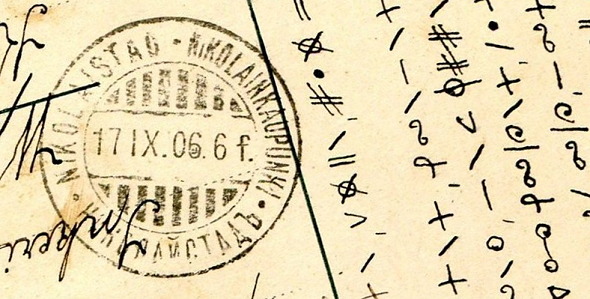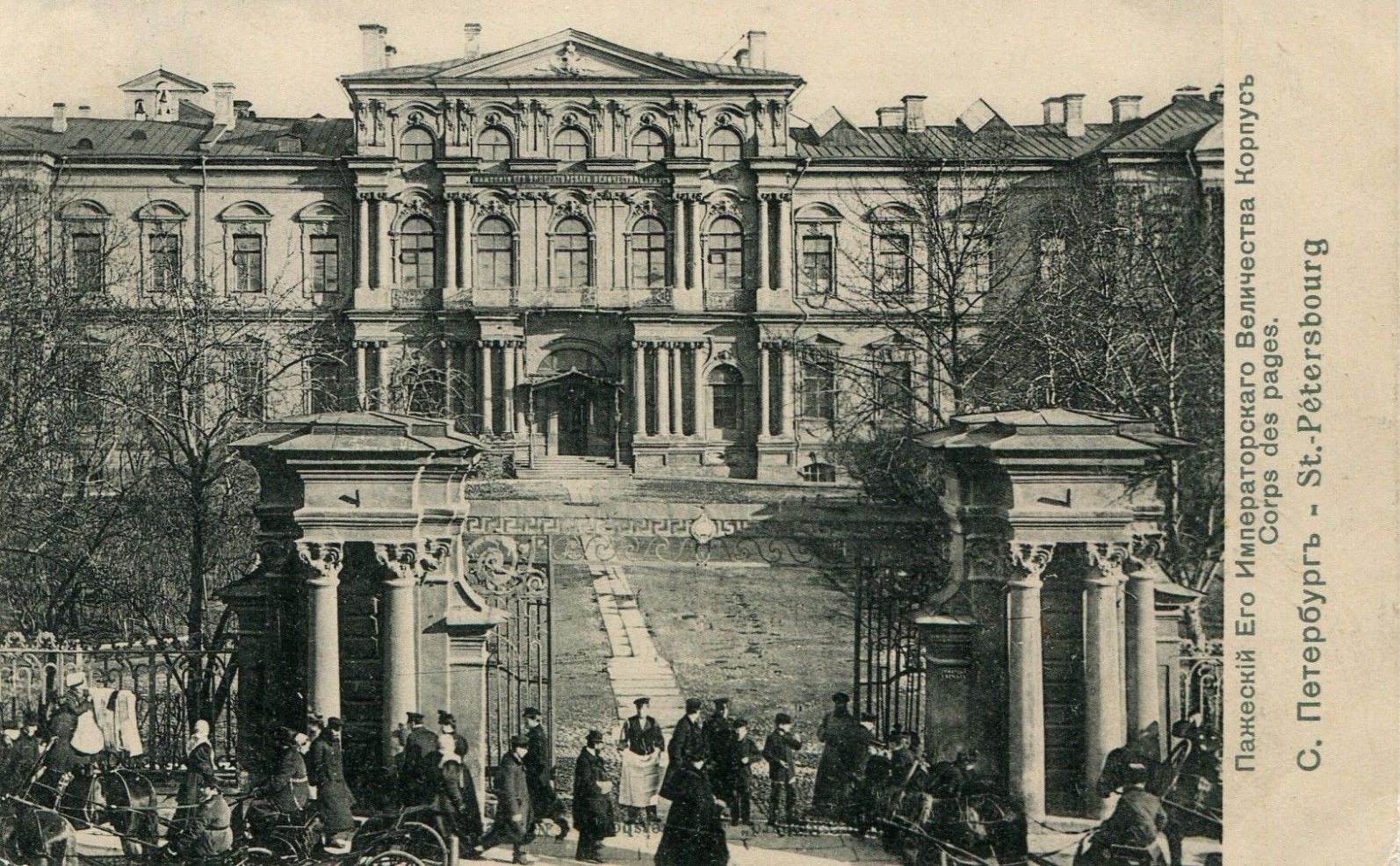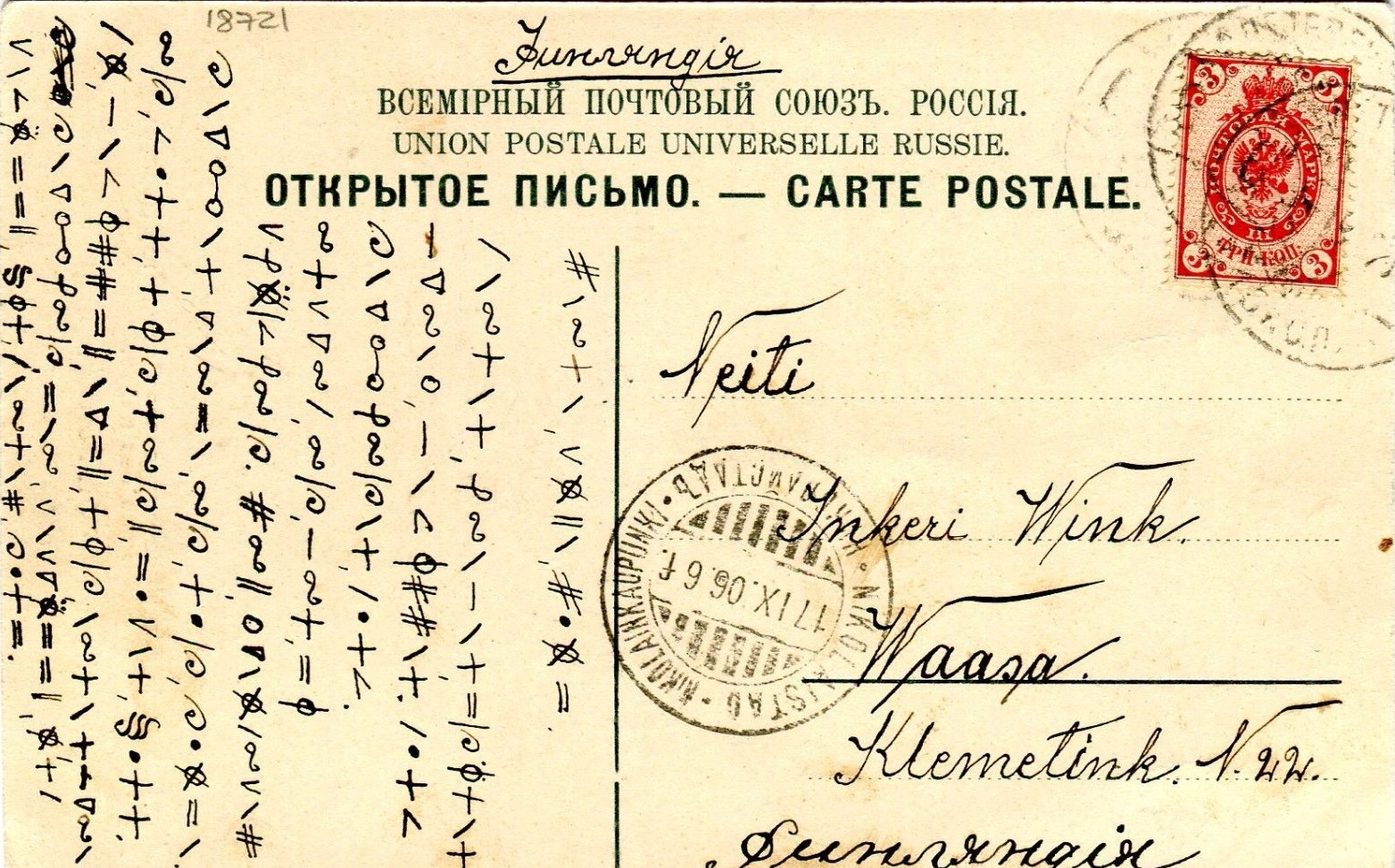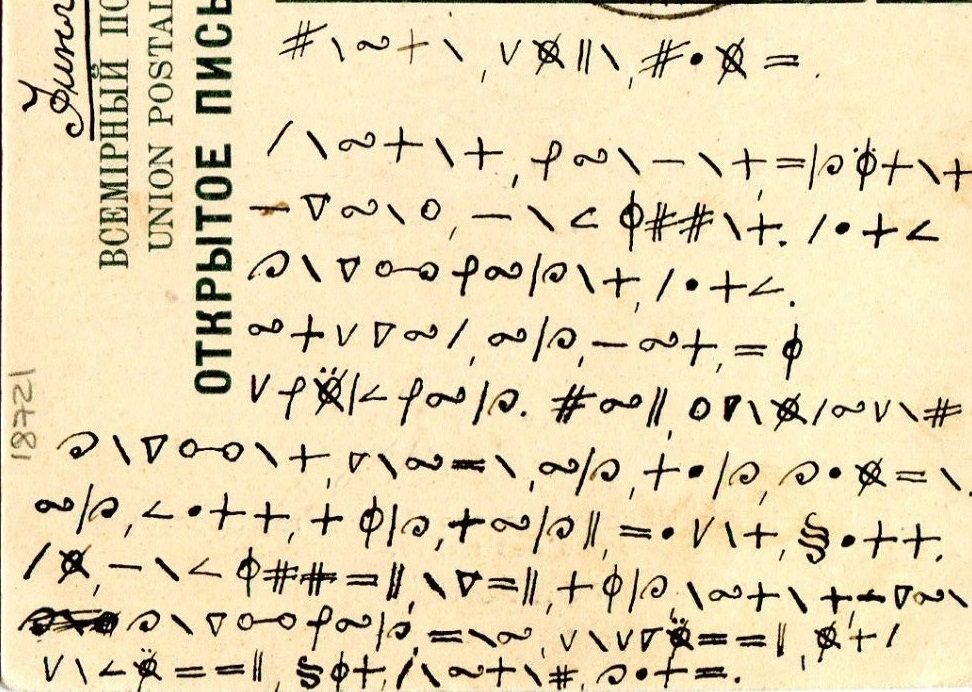In 1906 an unknown person sent an encrypted postcard from St. Petersburg, Russia, to Vaasa, Finland. Can a reader decrypt it?
Encrypted postcards are usually not too difficult to decipher. On Klausis Krypto Kolumne I have introduced dozens of them with my readers reaching a success rate close to 100 percent.
From Russia with love
The postcard I am going to introduce today – it was provided to me by comedy hacker, blogger and postcard collector Tobias Schrödel – is probably far from unbreakable, too. However, it is probably written in Finnish or Russian – not necessarily languages everybody understands. Here’s the picture side:
The postcard stems from St. Petersburg, Russia. As the text side shows, it was also sent from there in the year 1906:
The recipient was a woman named Inkeri (which would be “Ingrid” in German; there is no English counterpart of this name) living in Vaasa, Finland. The name(s) of this city fill a whole paragraph on Wikipedia:
The city was known as Wasa between 1606 and 1855, Nikolaistad (Swedish) and Nikolainkaupunki (Finnish) between 1855 and 1917, Vasa (Swedish) and Vaasa (Finnish) beginning from 1917, with the Finnish spelling of the name being the primary one from ca 1930 when Finnish speakers became the majority in the city.
The recipient address can be found on Google Maps (including Streetview).
Most encrypted postcards I’m aware of were written by young men to their loved ones. This suggests, that the sender of this card was Inkeri’s spouse. He sent his message from Russia with love – in the true sense of the meaning.
The cryptogram
The cipher used is probably a simple letter substitution. The main question is: was the card written by a Finn staying in Russia (i.e., the language is Finnish) or by a Russian having a spouse in Finland (i.e., the language is Russian)? The former is certainly more likely, as men used to travel more often than women, but not sure.
Can a reader solve this postcard?
Follow @KlausSchmeh
Further reading: Who can solve this encrypted postcard from Christmas 1906?
Linkedin: https://www.linkedin.com/groups/13501820
Facebook: https://www.facebook.com/groups/763282653806483/






Kommentare (13)